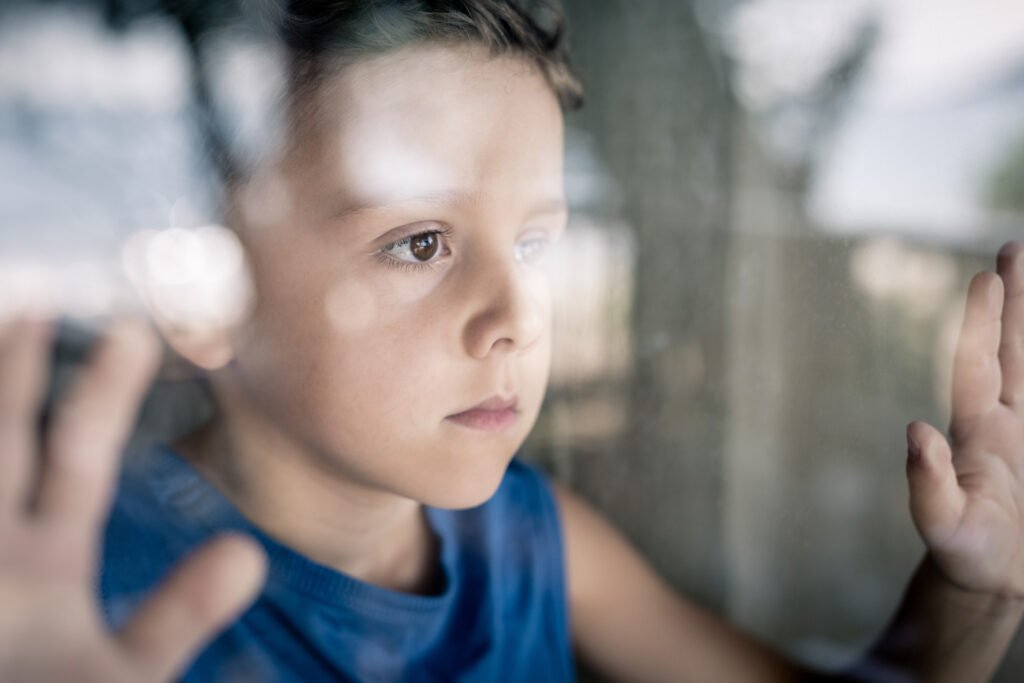Grief That Isn’t Recognized: Supporting Children Through Ambiguous Loss

What happens when a child’s grief isn’t about death, but about someone who is still alive—just painfully absent?
We’re often attuned to children grieving a death in the family. But there’s another form of grief that often flies under the radar: ambiguous loss. Whether due to a parent’s incarceration, forced immigration separation, estrangement, addiction, or mental illness, ambiguous loss is a silent sorrow that children carry without the recognition, rituals, or validation that often accompany bereavement.
This blog explores how we can support children through ambiguous losses—grief that lingers in the shadows—and provide trauma-informed, relationship-based tools to help them process what often feels unspeakable.
What Is Ambiguous Loss?
Coined by researcher Pauline Boss, ambiguous loss refers to grief that lacks clarity or closure. There are typically two types:
- Physical absence with psychological presence – e.g., a parent who is incarcerated, deported, or missing. The person is gone, but their presence is still deeply felt.
- Psychological absence with physical presence – e.g., a parent who is emotionally unavailable due to addiction, mental illness, or estrangement. The person is present, but the connection is lost.
Children experiencing ambiguous loss often feel confused, stuck, or invisible in their grief. They may not be offered the same support as someone grieving a death, and they may struggle to make sense of emotions they don’t know how to name.
Why This Kind of Grief Is So Hard for Children
Unlike traditional loss, ambiguous loss doesn’t follow a clear narrative. There’s no funeral, no “goodbye,” and often no validation from others. Instead, children are left to navigate a swirl of mixed emotions:
- Longing and loyalty – “I miss them, but I also feel angry.”
- Shame and silence – “I can’t tell people my dad’s in prison.”
- Hope and despair – “Maybe they’ll come back… or maybe not.”
In my own work, I remember a child who had been separated from her mother due to immigration issues. She couldn’t say the word “grief,” but her drawings told the story: a girl with a suitcase, a broken bridge, a door that never opened. She said, “I feel like my mum is on the other side of the world, but also still in my dreams every night.” That’s the paradox of ambiguous loss—it lives in the absence and in the presence, all at once.
Common Causes of Ambiguous Loss in Children
- Parent or caregiver incarceration
- Deportation or forced migration
- Family estrangement (e.g., due to conflict, abuse, or cultural rejection)
- Parental addiction or mental illness
- Long-term hospitalization or cognitive decline
- Foster care placement or out-of-home removal
- Divorce or abandonment without contact
How Ambiguous Loss Affects a Child’s Mental Health
Ambiguous loss can mimic many symptoms of anxiety, depression, and trauma:
- Difficulty concentrating at school
- Increased anger, sadness, or withdrawal
- Difficulty forming trusting relationships
- Preoccupation with reunification fantasies
- Nightmares or physical complaints
- Low self-worth or self-blame (“Maybe it’s my fault they’re gone”)
Because this grief is rarely named, these symptoms are often misunderstood or misdiagnosed. Children may be seen as acting out when, in fact, they are grieving.
How to Support Children Through Ambiguous Loss
1. Name the Loss, Gently
One of the most powerful things we can do is give language to the grief. Naming it reduces shame. Phrases like:
- “It’s really hard when someone is gone but not gone.”
- “Your feelings make so much sense.”
- “You’re not alone—lots of kids feel this way too.”
can create safety and validation.
2. Don’t Wait for Questions—Offer Invitations
Children may not know how to bring it up. Create safe entry points through books, play, or storytelling. I’ve had children process ambiguous loss through puppet play, drawing families with missing members, or writing imaginary letters to someone they miss.
3. Explore Rituals Without Closure
Help children create their own way of honoring the relationship, even without finality. Some examples include:
- Writing letters to the absent parent
- Creating a memory box
- Making a “feelings jar” with colored beads for different emotions
- Drawing a timeline of “before, during, and now”
These rituals don’t require resolution. They simply allow expression.
4. Normalize Mixed Feelings
Ambiguous loss is full of emotional contradictions. A child may love and resent their parent at the same time. Validate that both can exist. I often say, “It’s okay to feel two things at once—like missing someone and being angry at them too.”
5. Support the Present Connection
If the relationship continues in any form (e.g., letters, supervised visits, calls), help the child navigate that space. What do they wish they could say? What helps them feel safe or prepared?
If the relationship has ended permanently, support the child in forming new narratives around their identity and worth. Affirm: “You are more than what happened to your family.”
What Parents and Educators Can Do
- Be aware of emotional changes after court hearings, holidays, or birthdays—these often reactivate grief
- Avoid pressuring the child to “move on” or forgive before they’re ready
- Speak with honesty, using age-appropriate language, and leave space for ongoing dialogue
- Work closely with counselors and support networks who understand trauma and loss
- Celebrate the child’s resilience and strengths—not just their pain
Frequently Asked Questions
What if the child doesn’t want to talk about it?
That’s okay. Some children need time and control over their narrative. Offer other avenues—like drawing, metaphor, or symbolic play—and always keep the door open.
How is ambiguous loss different from complicated grief?
Complicated grief typically involves difficulty moving on after a known death. Ambiguous loss is ongoing and unresolved—it’s not about letting go, but learning to live with the uncertainty.
Can ambiguous loss affect attachment?
Yes. Children may become distrustful of relationships or fear abandonment. Gentle, consistent caregiving and therapeutic support can help restore safety.
What resources can help?
Books on grief and loss (including those written for children), therapeutic toolkits with expressive activities, and trauma-informed professionals who specialize in non-death grief can be incredibly supportive.
Final Thoughts: Grief Without Goodbye Still Deserves Compassion
Ambiguous loss is often invisible—but it is no less real. For children, this kind of grief can be especially confusing and isolating. As adults, our role is not to solve it—but to see it, name it, and make space for the stories that don’t have endings.
One teenager I supported told me, “It’s like I’m always waiting at a door that might never open.” But with time, creative outlets, and consistent support, she stopped waiting—and started building her own room. One with open windows, messy art, and music that made her feel alive again.
That’s the goal: not closure, but compassionate presence. Not perfect healing, but a safe place to land.
Want More Tools Like This?
If you’re working with children navigating complicated and ambiguous grief, the All Therapy Resources Membership is your go-to hub. With over 1,000 creative, trauma-informed printables, grief toolkits, visual aids, and therapeutic play activities, it equips professionals and caregivers to provide compassionate, developmentally appropriate support.
Visit https://membership.alltherapyresources.com to explore the full library of resources and join a network of passionate educators and therapists just like you.













